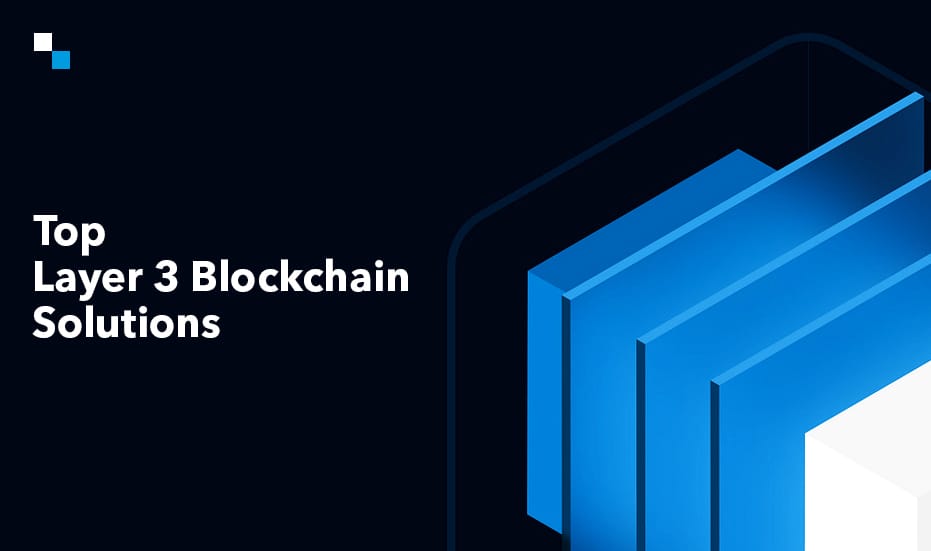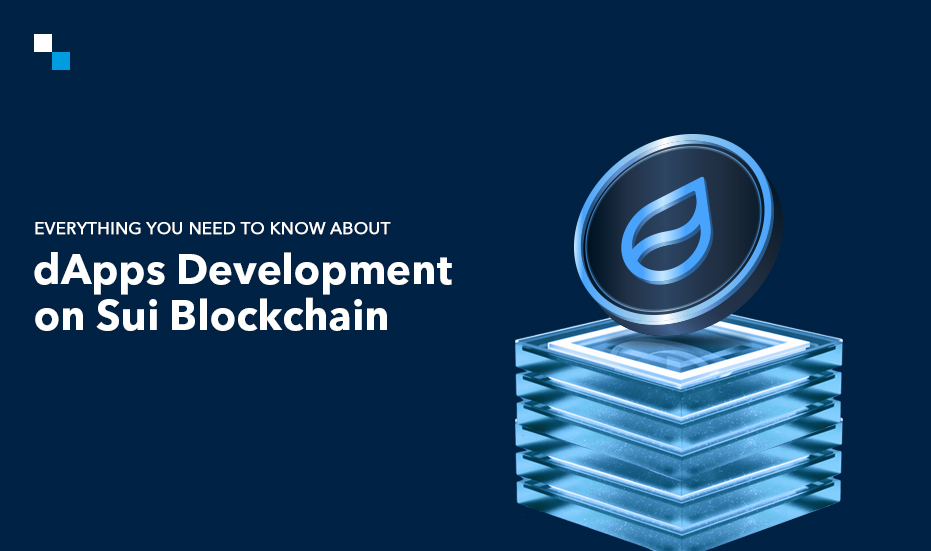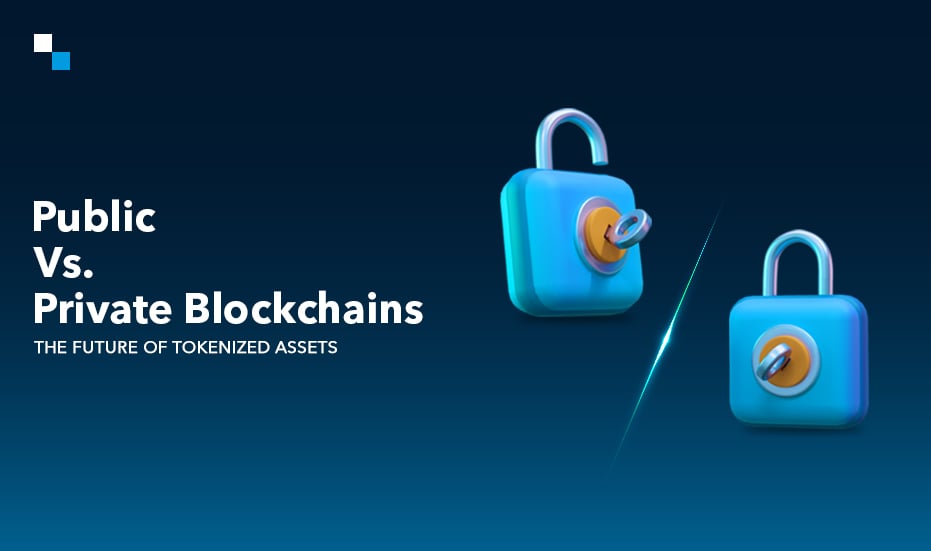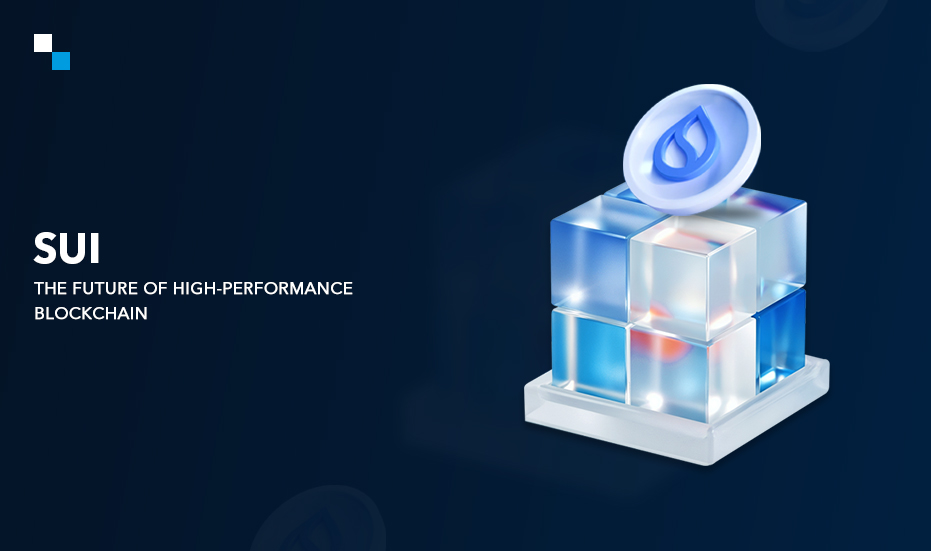
How White-Label DeFi Wallets Are Powering RWA Tokenization in 2025?
November 27, 2024
How to build a high-performance SUI blockchain exchange in 2025?
November 28, 2024Imagine a thriving gaming company developing a blockchain-based multiplayer platform where thousands of players trade virtual assets in real time. Initially, they operate on a Layer 1 blockchain, but as their player base grows, transaction speeds slow down, and fees skyrocket. They upgraded to a Layer 2 network for scalability, but it still lacks the specific tools needed for seamless cross-game asset transfers and customized gaming rules.
Enter Layer 3 blockchain solutions, a game-changer that enables the company to achieve custom scalability, interoperability, and optimized user experiences, all tailored to their exact needs. By focusing on application-specific needs, these solutions are redefining industries, from finance and healthcare to gaming and supply chain management.
Let’s dive into the top Layer 3 blockchain solutions transforming the landscape.
What are Layer 3 blockchain solutions?
Layer 3 blockchain solutions are application-specific protocols built atop Layer 1 (base chains) and Layer 2 (scaling protocols) infrastructures. While Layer 1 focuses on security and decentralization, and Layer 2 enhances scalability, Layer 3 provides specialized services like interoperability, privacy, and application-focused optimization.
Why do Businesses Need Layer 3 Blockchain Solutions?
-
Improved Scalability and Transaction Efficiency
Layer 3 solutions address scalability challenges that arise as businesses scale their blockchain operations. By moving computation and data-intensive tasks off-chain or to a dedicated Layer 3, these solutions improve transaction throughput without compromising security. Here are some scalability features:
- Reduced congestion on Layer 1 blockchains by offloading complex application logic.
- Faster processing of high-volume transactions, crucial for DeFi, e-commerce, and gaming.
This scalability makes blockchain technology practical for businesses handling large-scale operations, such as decentralized exchanges or enterprise supply chain systems.
-
Interoperability and Cross-Chain Connectivity
Businesses increasingly operate in multi-chain environments that require seamless interaction between different blockchain ecosystems. Layer 3 solutions focus on interoperability to facilitate cross-chain data sharing and asset transfers.
- Simplified transactions between different blockchain platforms, reducing operational silos.
- Enhanced ecosystem collaboration, enabling businesses to interact with customers and partners across various chains.
-
Future-Proofing Business Operations
Layer 3 blockchain solutions are a step toward the web3 vision, where applications and services operate seamlessly across decentralized platforms. Businesses that adopt Layer 3 protocols position themselves as early movers in the rapidly evolving blockchain landscape, gaining a competitive edge. Here is the strategic advantage:
- Staying ahead of technological advancements.
- Enabling flexibility to adapt to new market demands and blockchain innovations.
-
Optimized User Experience
One of the primary barriers to blockchain adoption has been its complexity for end users. Layer 3 solutions enhance the usability of blockchain applications by abstracting technical complexities and improving interaction interfaces.
- Simplified user interfaces lead to higher adoption rates among non-technical users.
- Streamlined onboarding processes for clients, employees, and partners.
Top Layer 3 Blockchain Solutions
1. Cosmos-IBC (Inter-Blockchain Communication)
Cosmos-IBC represents a key layer in facilitating interoperability across blockchains. Designed as part of the Cosmos ecosystem, it enables seamless asset and data transfers between independent blockchains. While traditionally aligned with layer 2 networks, Cosmos-IBC is expanding toward layer 3 solutions by integrating rollups and advanced scaling technologies. These integrations allow developers to build cross-chain applications with enhanced scalability, security, and functionality.
Cosmos-IBC’s modularity and the IBC protocol provide foundational support for applications that leverage Layer 3 protocols for improved functionality. It connects blockchains across ecosystems such as Polkadot and Avalanche while emphasizing interconnectivity in the blockchain ecosystem. Its TAO(Transport, Authentication, and Ordering) framework ensures secure and ordered packet transfer while laying the groundwork for interoperable blockchain-based applications.
2. Degen Chain
Degen Chain caters to the gaming & decentralized finance communities and offers layer 3 capabilities to enhance the functionality of layer 1 and 2 infrastructures. It aims to improve transaction speed, reduce costs, and support application-specific chains for niche markets like GameFi and NFTs.
Degen Chain incorporates smart contract functionalities with a focus on gaming ecosystems. It is particularly suited for building platforms that require high throughput and low latency, such as metaverse gaming and NFT marketplaces. As a Layer 3 blockchain project, Degen Chain provides specialized solutions for gaming projects that demand enhanced user interactivity and scalable frameworks.
3. Ham Chain
Ham Chain is a developing layer 3 blockchain network that focuses on privacy and scalability. Designed to augment existing blockchains, it offers off-chain computation and enhanced privacy layers for enterprise-grade applications. Ham Chain integrates with Layer 1 and 2 blockchains to provide advanced data privacy and transaction scalability.
It targets enterprise use cases requiring regulatory compliance and secure transaction environments. By focusing on private transactions and interoperability, Ham Chain is suitable for financial services and healthcare sectors that prioritize data security while leveraging blockchain functionality.
4. Xai
Xai is an emerging layer 3 blockchain platform designed to optimize user experiences through advanced scalability and interoperability. Xai’s Layer 3 architecture supports sophisticated use cases such as DeFi, decentralized gaming, and supply chain management.
It bridges the gap between blockchain ecosystems, enhancing throughput and reducing costs for dApps Xai focuses on providing tools for developers to integrate blockchain functionalities into mainstream applications without the complexities of Layer 1 or 2 development.
5. Orbs
Orbs is a Layer 3 blockchain platform tailored to enterprise solutions. It operates on top of existing blockchains to enhance scalability and governance while reducing complexity for application developers. Orbs uses hybrid architecture, combining decentralized and permissioned frameworks.
Orbs enhances Layer 1 and 2 functionality by offering decentralized consensus for enterprise applications. Its unique “virtual chain” technology allows customization of blockchain parameters for specific use cases. From DeFi protocols to supply chain solutions, Orbs provides scalability and cross-chain operability, enabling businesses to implement blockchain strategies without sacrificing performance.

Conclusion
Whether you’re in gaming, finance, healthcare, or supply chain management, Layer 3 solutions are the key to staying competitive in the evolving blockchain landscape. Layer 3 solutions are unlocking its full potential by addressing industry-specific challenges and delivering optimized scalability, interoperability, and user experiences. Ready to explore Layer 3 Blockchain solutions for your business? Get in touch with a renowned Blockchain development company today!



